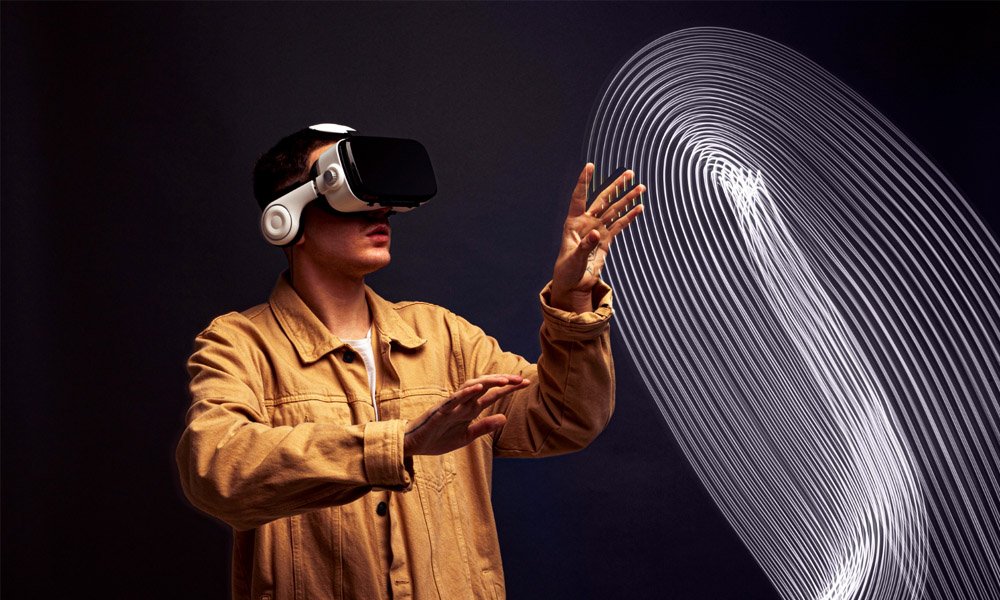Business
How Human-Centric Design Is Powering the Next Wave of Digital Innovation
Published
3 months agoon
By
Archie
In the race to innovate faster and smarter, businesses are quickly learning that success no longer hinges solely on advanced features, sleek tech stacks, or automation alone. Instead, it’s about how people experience those innovations. At the heart of this shift lies human-centric design—a mindset and methodology that prioritizes the needs, motivations, and behaviors of real users at every stage of product and service development.
Rather than asking, “What can this technology do?” the better question has become, “How can this technology improve people’s lives?” The answer to that is shaping the future of digital innovation across industries.
What Is Human-Centric Design?
Human-centric design is more than just user-friendly interfaces or attractive aesthetics. It’s a philosophy that centers on empathy. The goal is to create digital solutions that serve real human needs, solve real problems, and deliver value intuitively.
This approach combines research, iterative design, and cross-disciplinary collaboration to deeply understand user challenges. It doesn’t treat users as data points or demographics, but as active participants whose input helps shape better products. From websites and apps to enterprise software and connected devices, this design mindset ensures that functionality aligns with real-world usage.
Why It Matters More Than Ever
Today’s digital landscape is more competitive—and crowded—than ever before. With so many options available to consumers and businesses, the differentiator is often not features or price, but experience. If a product doesn’t feel intuitive or fails to anticipate user behavior, it risks being abandoned, no matter how technically robust it is.
Moreover, users now expect seamless interactions across channels. A customer might browse a product on their phone, complete the purchase on a desktop, and seek support through a smart speaker. Each touchpoint must feel consistent and thoughtfully designed, not cobbled together by disparate systems or teams.
Human-centric design ensures that digital experiences feel cohesive, useful, and even delightful. It anticipates friction points and solves them before they become frustrations. It turns users into advocates.
How Human-Centric Design Fuels Innovation
When organizations focus on the human side of innovation, they often uncover needs and opportunities that traditional development processes miss. For example:
- In healthcare, designing apps around patient anxiety and caregiver workflows has led to better engagement and outcomes.
- In finance, building empathy-driven platforms helps reduce the intimidation many users feel when managing money.
- In retail, understanding real shopping behaviors leads to smarter personalization and more satisfying journeys.
In every case, the innovation isn’t just a clever feature, it’s a smarter way of solving a deeply human problem.
Human-centric design also helps businesses stay agile. Because it emphasizes rapid prototyping, user feedback loops, and continuous iteration, it supports innovation that evolves with user expectations. Companies aren’t building once and hoping for the best; they’re co-creating with users every step of the way.
Real-World Application: The Eleven Approach
The success of human-centric design depends not only on intent but on execution. That’s where design consultancies like Eleven Agency come into play. By embedding strategy, design, and engineering into unified teams, they bring digital ideas to life with clarity and purpose. Their work spans everything from early-stage product strategy to full-scale development, always grounded in real-world human needs.
Whether designing a new digital product or optimizing an existing service, the emphasis remains on aligning innovation with the end user’s goals and pain points. This is the type of approach that doesn’t just drive digital transformation, it makes it meaningful.
The Role of Research and Empathy
A truly human-centric process begins with discovery. This includes qualitative research —interviews, ethnography, journey mapping—to uncover user expectations, habits, and frustrations. It also includes data-backed behavioral analysis to validate those insights at scale.
The magic happens when those insights are translated into actionable design principles. For instance, learning that users feel overwhelmed during onboarding can lead to smaller, digestible steps and clearer visual cues. Observing how users interact with a prototype can guide where functionality needs to shift or where messaging needs to be clearer.
It’s this intersection of empathy and evidence that allows teams to create digital products that resonate.
Scaling Human-Centricity Across Organizations
A single well-designed app isn’t enough. For real transformation, organizations need to build cultures around human-centric principles. That means cross-functional collaboration, leadership buy-in, and embedding design thinking into everyday workflows.
Design shouldn’t be a department, it should be a shared mindset. From marketing to customer support to product development, everyone plays a role in shaping user experience. Companies that embrace this holistic view consistently outperform their peers in customer satisfaction, loyalty, and innovation outcomes.
Looking Ahead: Design As a Competitive Advantage
Human-centric design isn’t a fleeting trend. As emerging technologies like AI, voice interfaces, and spatial computing become more embedded in daily life, the complexity of interactions will only increase. The companies that thrive will be those that translate this complexity into simplicity—through understanding, empathy, and smart design.
It’s not enough to build something that works. It must work for someone—in the context of their life, not just your roadmap. That’s the true power of human-centric design.
And that’s why the next wave of digital innovation won’t be driven by technology alone. It will be driven by people, and the teams who never forget to design for them.
You may like

Finding Grants for Nonprofits that Support Housing, Social Justice and Substance Abuse

Elgin Charles Williams: The “Emperor of Hair” and Jackée Harry’s Former Husband

Who Is Nicole Frangipane? Inside the Life of Halsey’s Amazing Mom

Lilly Wachowski’s Wife Alisa Blasingame: A Love Story Few Know

What Really Happened Between Brandi Padilla and Kevin Garnett?

Who Is Kevin Lazan? Everything About Rachel Platten’s Husband

Meet Henry Olyphant: The Private Son of a Hollywood Star

The Impact of Direct Mail Marketing in the Healthcare Sector

Best DVD to MP4 Converters for Windows & Mac in 2025

Polished Corners and Bold Frames: Fresh Interior Design Photography Ideas for the Inquisitive Eye

Carol Kirkwood’s Journey: Her Real Age, Husband, Career, and More

Revolutionizing Healthcare: The Emergence of AI-Driven Analytics

How Machine Learning and AI are Redefining the Future?

Aliza Barber: Meet Lance Barber’s Wife, Age, Life, Profile, Career and Net Worth

Evelyn Melendez: Jordan Knight’s Wife Bio, Marriage, Family, Career and Net Worth

Ilan Tobianah Biography: Family, Marriage, Lifestyle, Career and Net Worth

Who was Alice Marrow? Everything to Know About Ice-T’s and His Mother

King Von’s Autopsy Report: The Truth Behind the Tragic Death

Meet Otelia Cox: The Supportive Wife of Tony Cox – A True Fairy Tale Romance

Tea Leoni and Tim Daly Split – A Closer Look at Their Relationship and Breakup

Finding Grants for Nonprofits that Support Housing, Social Justice and Substance Abuse

Elgin Charles Williams: The “Emperor of Hair” and Jackée Harry’s Former Husband

Who Is Nicole Frangipane? Inside the Life of Halsey’s Amazing Mom

Lilly Wachowski’s Wife Alisa Blasingame: A Love Story Few Know

What Really Happened Between Brandi Padilla and Kevin Garnett?

Who Is Kevin Lazan? Everything About Rachel Platten’s Husband

Meet Henry Olyphant: The Private Son of a Hollywood Star

The Impact of Direct Mail Marketing in the Healthcare Sector

Best DVD to MP4 Converters for Windows & Mac in 2025

Polished Corners and Bold Frames: Fresh Interior Design Photography Ideas for the Inquisitive Eye
Category
Trending
-

 News2 months ago
News2 months agoCarol Kirkwood’s Journey: Her Real Age, Husband, Career, and More
-

 Health2 years ago
Health2 years agoRevolutionizing Healthcare: The Emergence of AI-Driven Analytics
-

 Technology2 years ago
Technology2 years agoHow Machine Learning and AI are Redefining the Future?
-

 Celebrity1 year ago
Celebrity1 year agoAliza Barber: Meet Lance Barber’s Wife, Age, Life, Profile, Career and Net Worth
